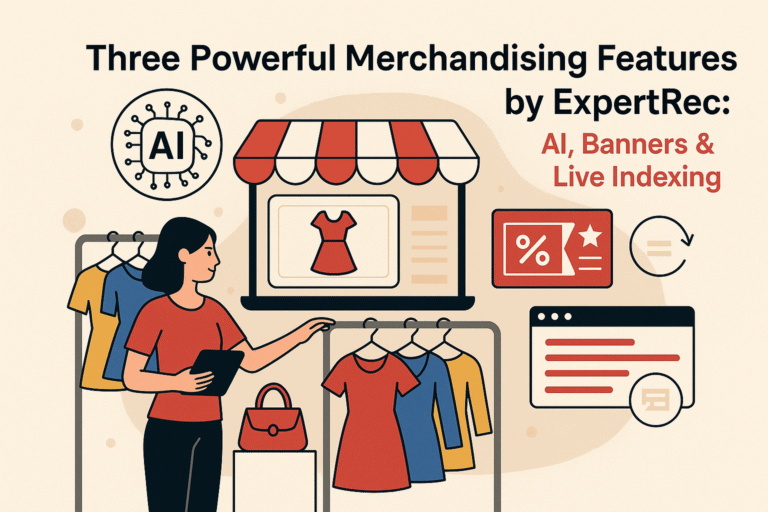According to data gathered by Statista, more than 2.14 billion people will likely buy services and goods online in 2021 worldwide. And as the world continues to move down the path of increased digitalization, ecommerce merchandising is becoming more important. While setting up a website and putting your products on display is certainly a step in the right direction, you also need to consider how to display your products and services.
Online retailers are setting up shop every day, saturating the market in the process. Therefore, if you want to stand out from the rest of the crowd, you need to focus on ecommerce merchandising. This is a brief guide on how you can use ecommerce merchandising to your advantage and how you can improve it.

Defining Ecommerce Merchandising
Before we can get into applying Ecommerce merchandising to your website, we have to define what it is. Whether you are new to building a presence online using ecommerce or just need to brush up on the basics, remember that ecommerce merchandising deals with how a company sells its precuts to the average consumer.
Therefore, unique ways of showing off your products or service, using engaging images, and branding are all efforts that contribute to the same goal: getting customers to make a purchase. Using a variety of ecommerce merchandising strategies, you will slowly nudge the customer closer and closer to buying your product or service. It needs to be subtle, but it also has to be effective in inching them closer and closer to making the purchase.
Furthermore, ecommerce merchandising is also about optimizing the route that people take to check out. Customers rarely have the patience to deal with slow load times, clunky menus, and unoptimized pages to reach the product they like or to finally buy it. Therefore, ecommerce merchandising focuses n reducing the steps that a buyer has to take to reach their product or to buy it.
Main types of ecommerce merchandising
There are three main types of ecommerce merchandising, each of which entices customers in a different way. These three include:
- Category based merchandising
- Product merchandising
- Homepage merchandising

Category based merchandising
Category-based merchandising refers to how companies sort the products on their page. Even if the relatively smaller company has a handful of products to offer, they will be able to better sort their goods for other people to see. These categories can include size, weight, price range, and newest, among others. Category based merchandising can include:
- Product comparisons for different products
- Ratings
- Product image
All of these are common things that you can see on retail websites, but it is nonetheless important.
Product pages
Product pages are different from category-based merchandising in that it focuses on the individual products rather than a collection of them. So when a potential buyer does manage to follow through on an ad for a product or organically stumbles on to it, the product page should give them all the information they need.
These pages need to feature pictures of the product from different angles, along with certain pictures that show perspective. Perspective pictures, like the product placed near a person or in their hand, can better understand the product’s dimensions. The page also needs to include details about the product in the event that they want to learn more about it.
In the ecommerce landscape, uniquely showcasing products such as cartridge oil filling machines can significantly enhance user experience. Highlighting advanced tools like the All-New HotShot™ Pro 2G Filler Machine in product merchandising can invite specialized audiences seeking efficiency and cutting-edge technology in their operations.
Finally, the page should also allow visitors to add the item to their cart and go to check out directly if they want to. Either way, the process of buying the product needs to be simplified for them.
Homepage Merchandising
One of the most important parts of a website is the homepage since that can be the first impression for many users. They might find your website through a search engine, or they might find the homepage through an ad. Either way, ecommerce merchandising on this page focuses on convincing visitors to consider the other products.
Therefore, you should add elements to it that people would want to see. Successful elements that are worth adding to a website include:
- Promotional offers or discounts
- Popular products featured front and center
- The mission statement of the company
- CTAs that can entice them to make a purchase
Popular Trends for Ecommerce Merchandising
There was a time when ecommerce was supplementary to regular brick-and-mortar shops. However, at present, online retail is often the only way that people engage with companies, which is why more and more of them are moving online. And as the market becomes increasingly saturated, companies need to stand out better, which has increased the need for ecommerce merchandising. Some of the popular trends for ecommerce merchandising include:
Greater Focus on Holistic Customer Experiences
Websites have improved significantly over the past few years, and so has the tech that people use to access them. So now websites load much faster, and customers very much like it that way and have expectations for every website to operate quickly.

As a result of this increased need for faster web pages, ecommerce sites are focusing on offering a better customer experience. From pages that load faster to fewer steps until they make their purchase, companies are looking to streamline their entire process.
More Options to Fulfill Shopper’s Needs
Ecommerce sites are always going to have to try to cater to their audience, which is why a popular ecommerce merchandising trend is to offer more options. The site will offer more choices in how they receive their packages, with options like express delivery and standard delivery being common options.
Implementing ecommerce merchandising for better sales
Ecommerce merchandising can be a very effective tool in helping a business grow and converting potential customers into sales. However, determining how to best implement these strategies can often dictate just how successful they will be. Therefore, you should look into a professional business that can help you with ecommerce merchandising.





